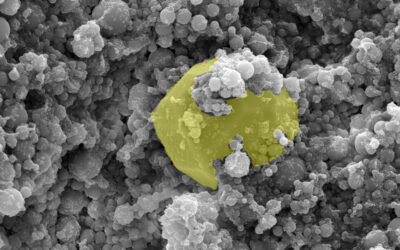![]() Photocatalytic hydrogen production from water is a very promising approach to harnessing sunlight to produce chemical fuels. In order to realize large-scale applications, it is highly desirable to develop semiconductor materials with high natural abundance and superior photocatalytic performance. Silicon, a naturally abundant semiconductor, is an ideal material for photocatalytic hydrogen production. It is the second most abundant element in the Earth’s crust and possesses a narrow band gap (~1.1 eV) that matches the solar spectrum well. However, the use of silicon in this important application has not been fully explored, and is mainly limited by the lack of a convenient and rational route to crystalline mesoporous silicon.
Photocatalytic hydrogen production from water is a very promising approach to harnessing sunlight to produce chemical fuels. In order to realize large-scale applications, it is highly desirable to develop semiconductor materials with high natural abundance and superior photocatalytic performance. Silicon, a naturally abundant semiconductor, is an ideal material for photocatalytic hydrogen production. It is the second most abundant element in the Earth’s crust and possesses a narrow band gap (~1.1 eV) that matches the solar spectrum well. However, the use of silicon in this important application has not been fully explored, and is mainly limited by the lack of a convenient and rational route to crystalline mesoporous silicon.
Recently, a joint team led by Prof. Hangxun Xu and Prof. Yujie Xiong at the University of Science and Technology of China demonstrated that highly crystalline mesoporous silicon spheres can exhibit prominent photocatalytic hydrogen production activity under visible light. The mesoporous silicon spheres exhibit high crystallinity, large surface area, narrow mesopore size distribution, and a broadened band gap, leading to impressive photocatalytic hydrogen evolution performance. The hydrogen generation rate of 1785 µmol h-1g-1 under visible light (>420 nm) well exceeds commercial Si nanoparticles and other porous Si materials. This work provides a new synthetic method and design principle for the synthesis and application of silicon materials in solar-fuel generation.
Text kindly provided by the authors of the original manuscript.
















